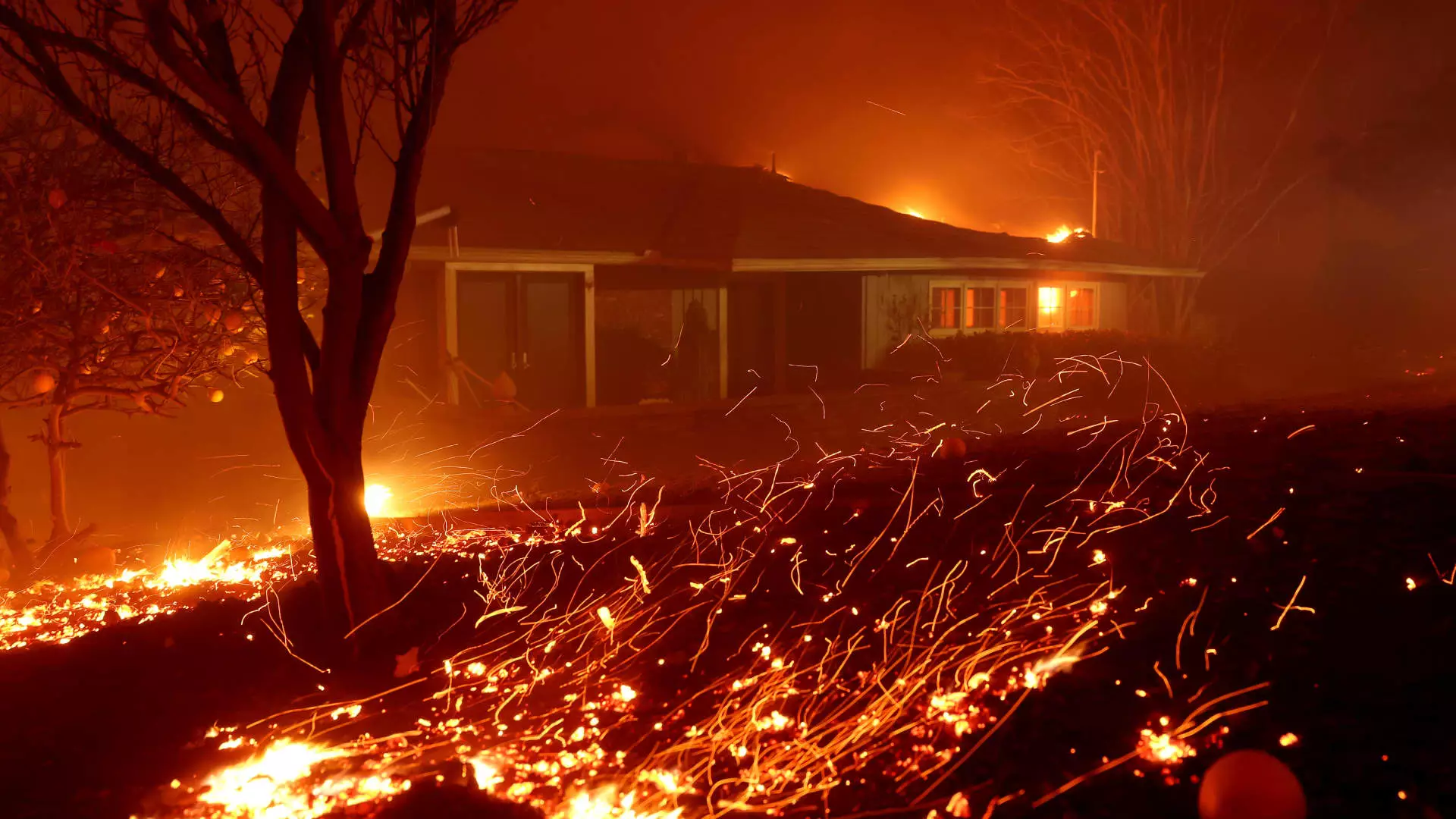The modern housing market is on the precipice of a seismic shift driven by the undeniable effects of climate change. Recent wildfires in Los Angeles serve as a stark reminder of the volatility that extreme weather events bring to real estate values and insurance costs across the nation. While the scope of the damage is still unfolding, analysts foresee a long-term transformation in how property is valued, priced, and insured. This article dissects the implications of climate change on real estate, emphasizing the urgent need for market adaptation.
In the coming decades, the financial landscape of U.S. real estate is poised to undergo profound changes. According to a report from First Street, a climate-risk assessment firm, approximately 84% of American homes will likely depreciate in value by 2055, leading to an astonishing total loss of $1.47 trillion. Jeremy Porter, who leads climate implications research at First Street, states, “Climate change is no longer a theoretical concern – it is a measurable force reshaping real estate markets.” The correlation between increasing climate risks and rising insurance premiums presents a crucial challenge that prospective homebuyers and investors have to face.
Current models suggest that national average insurance costs are anticipated to rise by 25% over the next 30 years. A considerable share of this increase—nearly 14%—is attributed to an initial underestimation of risks, with the remaining 11% stemming from the heightened susceptibility of properties to climate extremes. Though the average property might undergo a moderate dip in value—around 3%—specific regions could see dramatic declines. Places such as Texas, Florida, and Louisiana might experience value reductions reaching 50%. Such discrepancies will drastically reshape localized markets, implicating a broader national economic impact.
The insurability of properties in climate-prone regions is a central concern from both an economic and a societal perspective. Dave Burt, an expert in climate risk at DeltaTerra Capital, warns of a scenario where up to 20% of U.S. homes could be significantly devalued within a five-year frame due to climate change. He likens current trends to the pre-2008 financial crisis, wherein systemic fragilities within the insurance sector could lead to widespread economic repercussions. Given the recent tumultuous events, such as wildfires and hurricanes, the conventional model of underwriting appears increasingly untenable, leading insurers to reallocate risks and adjust premiums accordingly.
Burt’s perspective highlights the vulnerabilities that the insurance industry faces amidst escalating weather threats. Insurers previously held steady on pricing, ignoring the emerging patterns of climate-related disasters. However, they must now reckon with the fragility of their risk models—an evolution mirrored in the broader mortgage landscape where underwriting practices are slow to adapt to climate realities. The increasing difficulty of obtaining affordable insurance will inevitably affect housing prices, further complicating homeowners’ financial burdens.
Major firms like Fannie Mae and Freddie Mac are critical players in the mortgage market, yet they have exhibited hesitance to integrate climate risks into their pricing and underwriting practices. Tim Judge, Fannie Mae’s climate officer, has emphasized that current methodologies often overlook the escalating nature of climate threats, resulting in mispriced properties. This misalignment could hinder consumers’ awareness of impending increases in insurance costs, creating systemic risks for both homeowners and investors.
As climate-related disasters disrupt economies, foreclosures will likely follow, exacerbating market instability. Historical data shows stark increases in foreclosures following prior disasters—44% after Hurricane Sandy and a staggering 144% after the Iowa floods in 2008. Consequently, as liabilities mount and recovery options diminish, the vulnerability of the housing market to climate events will intensify.
As the pressures of climate change resonate through the real estate sector, both investors and homeowners must devise strategies to mitigate risks. Burt advocates for proactive measures, suggesting that investors should scrutinize their portfolios and consider hedging strategies to buffer against impending market shifts. Whether by avoiding at-risk securities or utilizing mortgage credit derivatives, the urgency to adapt has never been clearer.
Moreover, local governments might need to contemplate increasing taxes to fund necessary resilience initiatives. Enhanced infrastructure maintenance and energy efficiency efforts could become essential to fortifying communities against climate impacts. However, amid these pressing needs, political decisions can complicate matters—like the recent cessation of the Federal Flood Risk Management Standard, which could undermine future protective measures for public infrastructure.
The intersection of climate risk and the housing market prompts a fundamental reevaluation of property value assessments, insurance strategies, and financial prudence. Understanding and responding to these changes is paramount for investors and homeowners alike. The permanence of climate change demands an agile, informed approach to real estate that acknowledges the value volatility ahead. As we confront these pressing challenges, the housing market stands not only as a place of residence but also as a bellwether for broader economic health in the age of climate change.

